104 posts
• Page 2 of 5 • 1, 2, 3, 4, 5
Necromancy as a skill
-
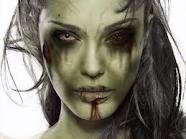
Mrs shelly Sugarplum - Posts: 3440
- Joined: Thu Jun 15, 2006 2:16 am
-

joeK - Posts: 3370
- Joined: Tue Jul 10, 2007 10:22 am
A useless skill because of conjuration. The necromancy theme can be achieved already, why make a skill of it, just so that is a skill?
-

matt oneil - Posts: 3383
- Joined: Tue Oct 09, 2007 12:54 am
You find a dead body, you harvest it for necromancer parts, you need some sort of captured black soul gem or something, and then you can sommon a skeleton or zombie or whatever. And you can equip said skeleton with armor and weapons!
-

Chenae Butler - Posts: 3485
- Joined: Sat Feb 17, 2007 3:54 pm
Well, I think the mental strain to control reanimated corpses is not as heavy as trying to keep a dremora in-line (in otherwords, more undead minions than daedric). Also, necromancy is more permanent, as it doesn't need to bypass and create loopholes in the division between Mundus and Oblivion. And you can modify your dead body to what one wants, and if the minion dies, you can fix it up and reanimate it, or just reanimate it.
Also, what's with using souls? Using them always sounded like a crutch for talentless hacks.
Also, what's with using souls? Using them always sounded like a crutch for talentless hacks.
-

Jynx Anthropic - Posts: 3352
- Joined: Fri Sep 08, 2006 9:36 pm
A useless skill because of conjuration. The necromancy theme can be achieved already, why make a skill of it, just so that is a skill?
Meh. For starters because typical rpg necromany has tons of specific spells which wouldn't fit into any of the current schools. Secondly corpse reviving requires a different type of micro-management than conjuration. One is based on time and magicka, another is based on an actual corpse in the game field and your own hp.
-

Soraya Davy - Posts: 3377
- Joined: Sat Aug 05, 2006 10:53 pm
Necromancy isn't a school of magicka, it is the misuse of the other schools for deeds deemed illegal. If you mean "Should necromancy be in the game" then yes, but as a part of conjuration, mysticism, and restoration, not a skill itself.
-

Manny(BAKE) - Posts: 3407
- Joined: Thu Oct 25, 2007 9:14 am
Well, I think the mental strain to control reanimated corpses is not as heavy as trying to keep a dremora in-line (in otherwords, more undead minions than daedric). Also, necromancy is more permanent, as it doesn't need to bypass and create loopholes in the division between Mundus and Oblivion. And you can modify your dead body to what one wants, and if the minion dies, you can fix it up and reanimate it, or just reanimate it.
Also, what's with using souls? Using them always sounded like a crutch for talentless hacks.
Also, what's with using souls? Using them always sounded like a crutch for talentless hacks.
wow I wasn't aware there were so many real life necromancers on these forums to tell us what really constitutes necromancy,thank you! :tops:
-

megan gleeson - Posts: 3493
- Joined: Wed Feb 07, 2007 2:01 pm
Necromancy isn't a school of magicka, it is the misuse of the other schools for deeds deemed illegal. If you mean "Should necromancy be in the game" then yes, but as a part of conjuration, mysticism, and restoration, not a skill itself.
this could work too, they could somehow fit corpse-puppetry into mysticism or restoration, and more leech type spells into destruction.
thing is that would feel kinda forced, but if they put some kind of nice lore behind it, why not.
-

Jani Eayon - Posts: 3435
- Joined: Sun Mar 25, 2007 12:19 pm
True necromancy (is not) a subset of conjuration as defined by the mages guild or it would be illegal in Oblivion to call up zombies and it was not, it was frowned upon to do so as they would ask you if you been messin with the dead when you were a conjurer, but if you remember in Oblivion true necromancy was just that (bringing the recently dead back to life) and you could do it again and again, I would like it to be permanent myself, you bring the dead back to life, but you could only have a set number of dead followers(the others you bring back just mosy around the area you leave them), but I think they should loose some skill, drop to say 4-5 lvls below you and you be able to have no more then 3-4 followers at a time.
-

Invasion's - Posts: 3546
- Joined: Fri Aug 18, 2006 6:09 pm
Well, I think the mental strain to control reanimated corpses is not as heavy as trying to keep a dremora in-line (in otherwords, more undead minions than daedric).
I would think so as well, never made much sense to me I could so easily summon a Daedroth and so easily make him attack anything I want for a full minute (or longer). Especially since I hardly ever play a highly-skilled magic-user. Of course, that hasn't stopped me from abusing the hell out of the ability.
Also, necromancy is more permanent, as it doesn't need to bypass and create loopholes in the division between Mundus and Oblivion.
Would probably want to set some limits on how long a corpse will remain animated though, especially the more powerful ones, like a big marauder-type that turns fallen opponents into undead servants through it's melee attacks. That'd be pretty sweet.
This has me thinking: What about the remains of non-summoned Daedra that have been slain? Would reanimating them be lore-friendly at all?
-

louise hamilton - Posts: 3412
- Joined: Wed Jun 07, 2006 9:16 am
Okay, it seems like a lot of people either have no idea what necromancy really is, its legality, and so on.
The only source we have about necromancy is contained here in, http://www.imperial-library.info/content/morrowind-preparation-corpse. Read it, learn it, be it.
Well...I know in MW, most daedra would disappear as dust (which makes sense). If it somehow doesn't vanish back into Oblivion, then I think a necromancer would just absolutely love to study and experiment on a daedroth's body. It's not like the daedroth would get too pissy, the physical body is nothing more than a shell.
The only source we have about necromancy is contained here in, http://www.imperial-library.info/content/morrowind-preparation-corpse. Read it, learn it, be it.
This has me thinking: What about the remains of non-summoned Daedra that have been slain? Would reanimating them be lore-friendly at all?
Well...I know in MW, most daedra would disappear as dust (which makes sense). If it somehow doesn't vanish back into Oblivion, then I think a necromancer would just absolutely love to study and experiment on a daedroth's body. It's not like the daedroth would get too pissy, the physical body is nothing more than a shell.
-

Francesca - Posts: 3485
- Joined: Thu Jun 22, 2006 5:26 pm
Necromancy is as useful a skill as Partying would be. Necromancy is just raising the Dead, so basically illegal Conjuration.
Okay, it seems like a lot of people either have no idea what necromancy really is, its legality, and so on.
The only source we have about necromancy is contained here in, http://www.imperial-library.info/content/morrowind-preparation-corpse. Read it, learn it, be it.
The only source we have about necromancy is contained here in, http://www.imperial-library.info/content/morrowind-preparation-corpse. Read it, learn it, be it.
-

Margarita Diaz - Posts: 3511
- Joined: Sun Aug 12, 2007 2:01 pm
I've got things to do at the moment, so for now I'll just walk in, post my segment on what I'd give a Necromancy spell school, and walk out.
Necromancy
Necromancy
Spoiler
*Necromancy: Revivification
-Revive: The signature skill of necromancy, pulling a spirit from the outer realms and forcibly placing it into a waiting corpse to act as its body. Though it resembles summoning, the skills involved are completely different, and talent at one does nothing to improve the other. Daedra cannot die, while spirits are the remains of a thing that is dead, and the two are almost polar opposites when it comes to magically manipulating their essence. As many ghosts have only partial consciousness and in general much weaker willpower than daedra, it is not necessary to further complicate the effort with binding Command magics; the caster’s will alone is enough. As well, since the caster isn’t temporarily forcing openings in powerful borders that separate Oblivion from the Mundus, spirits may be held for much longer periods. The caster’s Revivification skill dictates the difficulty level of animating a corpse. Novice necromancers are initially only able to animate fresh, intact bodies. As skill increases, in a method resembling how trapped souls are used to fuel the magic in items, the necromancer is able to manipulate the spirit to simulate missing ligaments and tissues, animating skeletons and incomplete bodies The pinnacle of reviving magic is the ability to animate monstrosities cobbled together from separate species. Servants created through reviving can last indefinitely without becoming “unsummoned,” with the failure rate of additional servants climbing the more that the necromancer has, including spirits. The normal method of reviving involves a ritual including the creation and/or preparation of the body. However, in tight situations, the necromancer may directly cast the spell on the bodies of the recently fallen to immediately reinforce their position. Though fast, this method creates a servant that is weaker, short-lived, and applied with a much lower skill level; it takes a more powerful necromancer just to instantly animate even fresh, intact corpses. As well, this damages the body against future use. Almost any previously-living thing that leaves a corpse can be revived or contribute parts to the process.
-Bind Spirit: Pulls a ghost into the world and chains it to the necromancer’s will as with Revive, but leaves it in its incorporeal state instead of sealing it within a corpse. Spirits are far less dangerous than daedra, but easier to maintain. Failure rates climb the more spirits that are summoned at once, and revived undead are included in this equation. Spirits can be given commands as through the necromancer’s Instruction skill. With targeted spells the caster can attempt to take control over free-roaming ghosts, allowing the same commands as with summoned spirits.
-Outer Inquiry: Sends a portion of the necromancer’s consciousness into the outer realms, directly communicating with more intelligent spirits instead of controlling them. Such conversations are more difficult to maintain than normal speech, are further limited by the magical rules of spell failure and magicka drain, and may be confusingly vague or bizarre. However, they can also be a source of rare or unusual information not normally gleaned from the living world. If specific information is needed, the necromancer may select a name to attempt to reach a certain person’s spirit. With a soul gem, the necromancer can attempt to trap the called spirit, and use it to revive the individual’s preserved and restored body, potentially returning them to true life, one of the most difficult and impressive powers of necromancy. Requires a ritual to be cast.
-Necrotic Virus: Raises a virus, one of the simplest types of life, into an undead form. Being dead, the virus cannot multiply and is no longer contagious. However, the body’s natural defenses can no longer destroy it, considerably increasing both its severity and the difficulty of removing it. Rebuke Spirit spells may slow its advancement or remove weaker viruses, but more potent infections may require special treatment, such as medicines containing shavings of enchanted silver. Viruses are maintained within a sample of dead flesh possessed by the necromancer, and the easiest way to spread them is by using the sample as the reagent for a Poison spell.
-Necrotic Organ: The necromancer attempts to raise parts of themselves as undead, allowing them to continue functioning. Though painful, dangerous, and difficult, it allows the caster to openly defy death. The spell has two functions; to negate an injury, and to protect an organ. The former requires that the caster be injured in some way, such as with a broken bone or damaged eye. Upon choosing the target and casting the spell the injury vanishes and that body part is considered undead, and is more difficult to injure a second time. A re-injured organ can be revived again, but this stacks, and is more difficult each time. Protecting the body requires that the spell be cast before combat, and will automatically revive an organ if it is struck. The more times a part is revived, the more it is considered undead. When undead organs are struck the character takes less damage depending on how advanced the state is, to the point that certain locations essentially cause no damage. However, the necromancer must maintain their own life, and the living portions of their body become ever more valuable. Vital areas take more damage the less of them there are, and fatigue/magicka regeneration slowly decrease. Undead organs will not naturally heal, and must be repaired with restoration magic, potions, or other supernatural means to be returned to life. The most powerful and dangerous use of the spell is to protect the heart beforehand; upon death the caster will collapse briefly and enemies will turn away, before the heart is revived and the caster stands with a small amount of health restored. However, this effect is temporary (duration depending on skill level), and if the heart isn't restored to life before then the necromancer will completely die. The Necrotic Organ effect has no use for entirely undead targets (including if the necromancer becomes a lich).
-Cannibalize Dead: Allows the caster to utilize dead flesh to heal wounds. Unlike the Necrotic Organ effect, it does not create undeath or alter living tissue, but instead uses dead tissue to replace destroyed flesh and then uses necromancy to blur the lines between living and dead, letting the replacements heal and become "normal" tissue. The spell must either target a corpse as the source or the caster must have flesh in their inventory. Though it restores health less effectively than restoration spells, and is not instant (the health regenerates more slowly), it allows healing within the necromancer's chosen field. Because it transmits solid matter, higher ranges increase spell difficulty dramatically, working best with On Touch. The spell loses efficiency the further the race of the target corpse is from the caster, with other humanoids being second best, followed by animals, then exotic monsters, and so on. Casts consume flesh according to magnitude, and smaller corpses can be quickly stripped. When health is otherwise full the spell can restore undead organs, but requires large amounts of "meat" as entire parts are being replaced, and healing is another degree slower. With material in inventory the necromancer can cast the spell on target; this is most effective for undead servants, who don't need the tissue to heal, and as such are recovered by it just as effectively as one casting restoration on themselves. Undead servants can be created capable of this effect, and will literally consume the dead to heal themselves.
-Forbidding: Prevents spirits that leave a body from pursuing their normal afterlife, effectively causing ghosts to spawn from the newly dead. Once the duration runs out there is a chance that lingering ghosts will disperse, depending on the skill of the caster (higher skill makes them more likely to remain in the physical world). Can be cast on a target or in an area, effecting any who die within its radius. Spirits created in this way don't have any specific allegiance, and may wander away, attack anything nearby, attempt to resume what they were doing in life, attack the one who killed them, and so on. Very powerful necromancers can combine a Forbidding effect with Bind Spirit, potentially creating a small army.
-Animate Item: A very simple form of undeath is induced into equipment made from organic components, such as bone, leather, or carapace. This allows them to “heal” from damage, essentially repairing material types that are often the most difficult to fully restore with normal means. Likewise, a negative version can be cast on enemies wearing items of the same material, degrading their equipment.
*Necromancy: Instruction
-Does not have normal spell effects. Rather, this skill governs the complexity of the orders a necromancer may give their servants. Both undead and spirits may be given orders, but only those created by the caster, as even those not hostile to the player are controlled by another necromancer. For the most part, the order system works the same as with leadership skills and the Request dialogue function, but falls under a different skill as it represents direct mental commands and not spoken orders. All servants can be called to defend the caster at any skill level, and when given this order supercedes all other instructions. Sets of orders may be copied if the caster wishes all of their servants to behave the same way, and may also be written into spellbooks as part of a ritual, to create undead with specific behaviors already built in. "Instruction" itself is cast as a low-cost spell, which brings up a command menu and existing servants, and may be used at any time.
-Hematic Script: The necromancer is capable of using blood to invoke necromantic power through writing. Essentially, by enscribing runes in blood they can enchant scrolls and books without using the Enchantment skill or a soul gem. Instruction skill determines the magnitude of power that the writing can hold. However, because dead blood is being used to power necromantic magic, non-Necromancy skill effects are more difficult to use in this way. Hematic Script is a highly personalized type of magic, and anyone other than the writer or their servants trying to use such an item has a higher difficulty penalty. As well, using such items at all requires comparable skill in Instruction, with higher rates of disastrous failure for those not meeting the requirements. If someone not a necromancer finds and attempts to use a necromantic spellbook written in Hematic Script, they are likely to kill themselves. More exotic or inherently magical types of blood can boost effects, or be used for highly specialized spells; for example, a scroll to animate someone's corpse written in their blood. If the necromancer chooses to grant this ability to an undead servant, they become capable of activating their creator's Hematic Script even if they can't read anything else. Depending on the power of the blood and the necromancer, Hematic Script will have a base level of magical power. If the inscribed effects stay below this level, it can be used repeatedly. Otherwise, the power will burn out on use. For example, a rune in blood might be enchanted with the Lockswitch spell, and used to open and close a hidden door at will.
*Necromancy: Design
-This skill, along with other effects, governs the necromancer’s ability to build and maintain corpses, including stitching, preservation, reinforcing, mummification, and so on. Improved skill increases the stats of servants in many ways, and raises the necromancer’s talent at reconnecting parts. Failure to properly maintain or attach pieces of corpses can drastically weaken the servant, prevent the spell from succeeding at all, or damage the corpse. While experienced necromancers favor composite undead to create more powerful servants, when preserving the original form of a corpse higher design skill can allow it to retain some of the skills it had in life. Bound spirits do not benefit from the Design skill.
-Poison: Rapidly speeds up the decomposition process, turning flesh into a toxic, putrefied mess. This can be directed toward enemies in two forms; gas or liquid. The ease of spreading it makes gas the preferred form of magical poison, and though not as instantly dangerous as other forms of poison it can lead to suffocation and disease over time, as well as crippling those caught within the cloud, sometimes simply from sheer revulsion. Liquid poison is much more dangerous, but harder to apply, often requiring that the target already be wounded, so that the substance has an entry point. Magical creation of poison requires an organic reagent, typically flesh of some kind, with its potency varying by skill and choice of reagent. Either form can be placed into a sealed container for later use, but may lose effect over time.
-Bone Shape: Utilizes the necromancer's skill in physical corpse maintenance and combines it with the same magical connections that replace tendons and muscle to create equipment. The spell can only be cast on self, upon which it opens a page listing bones in inventory and items that can be made from them. Quality depends on skill level and bone type (ogre bones are stronger than human, etc). Though items are of lesser quality and variety than normally crafted equipment, they can be made relatively quickly and easily at any time. At higher skill levels undead servants can be made to use the spell; a powerful servant can kill an enemy, eat its flesh to heal itself, then use the bones to improve its equipment.
-Reawaken: Attempts to modify dead flesh so that magicka once again naturally flows through it. Failure can damage and weaken the target material. This effect must be incorporated into overall revival of high-grade undead in order for them to be capable of using magic. A Reawakened corpse that has not been revived essentially becomes a necromantic power source in a certain radius around it, such as a focus or soul gem. However, the effect is very inefficient by comparison, and the amounts of dead flesh the average necromancer may carry with them cannot provide a substantial bonus, often requiring entire bodies. These corpses are frequently positioned around the necromancer's primary place of work, improving their abilities. When invoked through the Hematic Script ability, Reawaken can draw additional power from the blood writing, trading some of the overall potency of the script in exchange for the ability to better use non-necromantic spell effects.
-Revive: The signature skill of necromancy, pulling a spirit from the outer realms and forcibly placing it into a waiting corpse to act as its body. Though it resembles summoning, the skills involved are completely different, and talent at one does nothing to improve the other. Daedra cannot die, while spirits are the remains of a thing that is dead, and the two are almost polar opposites when it comes to magically manipulating their essence. As many ghosts have only partial consciousness and in general much weaker willpower than daedra, it is not necessary to further complicate the effort with binding Command magics; the caster’s will alone is enough. As well, since the caster isn’t temporarily forcing openings in powerful borders that separate Oblivion from the Mundus, spirits may be held for much longer periods. The caster’s Revivification skill dictates the difficulty level of animating a corpse. Novice necromancers are initially only able to animate fresh, intact bodies. As skill increases, in a method resembling how trapped souls are used to fuel the magic in items, the necromancer is able to manipulate the spirit to simulate missing ligaments and tissues, animating skeletons and incomplete bodies The pinnacle of reviving magic is the ability to animate monstrosities cobbled together from separate species. Servants created through reviving can last indefinitely without becoming “unsummoned,” with the failure rate of additional servants climbing the more that the necromancer has, including spirits. The normal method of reviving involves a ritual including the creation and/or preparation of the body. However, in tight situations, the necromancer may directly cast the spell on the bodies of the recently fallen to immediately reinforce their position. Though fast, this method creates a servant that is weaker, short-lived, and applied with a much lower skill level; it takes a more powerful necromancer just to instantly animate even fresh, intact corpses. As well, this damages the body against future use. Almost any previously-living thing that leaves a corpse can be revived or contribute parts to the process.
-Bind Spirit: Pulls a ghost into the world and chains it to the necromancer’s will as with Revive, but leaves it in its incorporeal state instead of sealing it within a corpse. Spirits are far less dangerous than daedra, but easier to maintain. Failure rates climb the more spirits that are summoned at once, and revived undead are included in this equation. Spirits can be given commands as through the necromancer’s Instruction skill. With targeted spells the caster can attempt to take control over free-roaming ghosts, allowing the same commands as with summoned spirits.
-Outer Inquiry: Sends a portion of the necromancer’s consciousness into the outer realms, directly communicating with more intelligent spirits instead of controlling them. Such conversations are more difficult to maintain than normal speech, are further limited by the magical rules of spell failure and magicka drain, and may be confusingly vague or bizarre. However, they can also be a source of rare or unusual information not normally gleaned from the living world. If specific information is needed, the necromancer may select a name to attempt to reach a certain person’s spirit. With a soul gem, the necromancer can attempt to trap the called spirit, and use it to revive the individual’s preserved and restored body, potentially returning them to true life, one of the most difficult and impressive powers of necromancy. Requires a ritual to be cast.
-Necrotic Virus: Raises a virus, one of the simplest types of life, into an undead form. Being dead, the virus cannot multiply and is no longer contagious. However, the body’s natural defenses can no longer destroy it, considerably increasing both its severity and the difficulty of removing it. Rebuke Spirit spells may slow its advancement or remove weaker viruses, but more potent infections may require special treatment, such as medicines containing shavings of enchanted silver. Viruses are maintained within a sample of dead flesh possessed by the necromancer, and the easiest way to spread them is by using the sample as the reagent for a Poison spell.
-Necrotic Organ: The necromancer attempts to raise parts of themselves as undead, allowing them to continue functioning. Though painful, dangerous, and difficult, it allows the caster to openly defy death. The spell has two functions; to negate an injury, and to protect an organ. The former requires that the caster be injured in some way, such as with a broken bone or damaged eye. Upon choosing the target and casting the spell the injury vanishes and that body part is considered undead, and is more difficult to injure a second time. A re-injured organ can be revived again, but this stacks, and is more difficult each time. Protecting the body requires that the spell be cast before combat, and will automatically revive an organ if it is struck. The more times a part is revived, the more it is considered undead. When undead organs are struck the character takes less damage depending on how advanced the state is, to the point that certain locations essentially cause no damage. However, the necromancer must maintain their own life, and the living portions of their body become ever more valuable. Vital areas take more damage the less of them there are, and fatigue/magicka regeneration slowly decrease. Undead organs will not naturally heal, and must be repaired with restoration magic, potions, or other supernatural means to be returned to life. The most powerful and dangerous use of the spell is to protect the heart beforehand; upon death the caster will collapse briefly and enemies will turn away, before the heart is revived and the caster stands with a small amount of health restored. However, this effect is temporary (duration depending on skill level), and if the heart isn't restored to life before then the necromancer will completely die. The Necrotic Organ effect has no use for entirely undead targets (including if the necromancer becomes a lich).
-Cannibalize Dead: Allows the caster to utilize dead flesh to heal wounds. Unlike the Necrotic Organ effect, it does not create undeath or alter living tissue, but instead uses dead tissue to replace destroyed flesh and then uses necromancy to blur the lines between living and dead, letting the replacements heal and become "normal" tissue. The spell must either target a corpse as the source or the caster must have flesh in their inventory. Though it restores health less effectively than restoration spells, and is not instant (the health regenerates more slowly), it allows healing within the necromancer's chosen field. Because it transmits solid matter, higher ranges increase spell difficulty dramatically, working best with On Touch. The spell loses efficiency the further the race of the target corpse is from the caster, with other humanoids being second best, followed by animals, then exotic monsters, and so on. Casts consume flesh according to magnitude, and smaller corpses can be quickly stripped. When health is otherwise full the spell can restore undead organs, but requires large amounts of "meat" as entire parts are being replaced, and healing is another degree slower. With material in inventory the necromancer can cast the spell on target; this is most effective for undead servants, who don't need the tissue to heal, and as such are recovered by it just as effectively as one casting restoration on themselves. Undead servants can be created capable of this effect, and will literally consume the dead to heal themselves.
-Forbidding: Prevents spirits that leave a body from pursuing their normal afterlife, effectively causing ghosts to spawn from the newly dead. Once the duration runs out there is a chance that lingering ghosts will disperse, depending on the skill of the caster (higher skill makes them more likely to remain in the physical world). Can be cast on a target or in an area, effecting any who die within its radius. Spirits created in this way don't have any specific allegiance, and may wander away, attack anything nearby, attempt to resume what they were doing in life, attack the one who killed them, and so on. Very powerful necromancers can combine a Forbidding effect with Bind Spirit, potentially creating a small army.
-Animate Item: A very simple form of undeath is induced into equipment made from organic components, such as bone, leather, or carapace. This allows them to “heal” from damage, essentially repairing material types that are often the most difficult to fully restore with normal means. Likewise, a negative version can be cast on enemies wearing items of the same material, degrading their equipment.
*Necromancy: Instruction
-Does not have normal spell effects. Rather, this skill governs the complexity of the orders a necromancer may give their servants. Both undead and spirits may be given orders, but only those created by the caster, as even those not hostile to the player are controlled by another necromancer. For the most part, the order system works the same as with leadership skills and the Request dialogue function, but falls under a different skill as it represents direct mental commands and not spoken orders. All servants can be called to defend the caster at any skill level, and when given this order supercedes all other instructions. Sets of orders may be copied if the caster wishes all of their servants to behave the same way, and may also be written into spellbooks as part of a ritual, to create undead with specific behaviors already built in. "Instruction" itself is cast as a low-cost spell, which brings up a command menu and existing servants, and may be used at any time.
-Hematic Script: The necromancer is capable of using blood to invoke necromantic power through writing. Essentially, by enscribing runes in blood they can enchant scrolls and books without using the Enchantment skill or a soul gem. Instruction skill determines the magnitude of power that the writing can hold. However, because dead blood is being used to power necromantic magic, non-Necromancy skill effects are more difficult to use in this way. Hematic Script is a highly personalized type of magic, and anyone other than the writer or their servants trying to use such an item has a higher difficulty penalty. As well, using such items at all requires comparable skill in Instruction, with higher rates of disastrous failure for those not meeting the requirements. If someone not a necromancer finds and attempts to use a necromantic spellbook written in Hematic Script, they are likely to kill themselves. More exotic or inherently magical types of blood can boost effects, or be used for highly specialized spells; for example, a scroll to animate someone's corpse written in their blood. If the necromancer chooses to grant this ability to an undead servant, they become capable of activating their creator's Hematic Script even if they can't read anything else. Depending on the power of the blood and the necromancer, Hematic Script will have a base level of magical power. If the inscribed effects stay below this level, it can be used repeatedly. Otherwise, the power will burn out on use. For example, a rune in blood might be enchanted with the Lockswitch spell, and used to open and close a hidden door at will.
*Necromancy: Design
-This skill, along with other effects, governs the necromancer’s ability to build and maintain corpses, including stitching, preservation, reinforcing, mummification, and so on. Improved skill increases the stats of servants in many ways, and raises the necromancer’s talent at reconnecting parts. Failure to properly maintain or attach pieces of corpses can drastically weaken the servant, prevent the spell from succeeding at all, or damage the corpse. While experienced necromancers favor composite undead to create more powerful servants, when preserving the original form of a corpse higher design skill can allow it to retain some of the skills it had in life. Bound spirits do not benefit from the Design skill.
-Poison: Rapidly speeds up the decomposition process, turning flesh into a toxic, putrefied mess. This can be directed toward enemies in two forms; gas or liquid. The ease of spreading it makes gas the preferred form of magical poison, and though not as instantly dangerous as other forms of poison it can lead to suffocation and disease over time, as well as crippling those caught within the cloud, sometimes simply from sheer revulsion. Liquid poison is much more dangerous, but harder to apply, often requiring that the target already be wounded, so that the substance has an entry point. Magical creation of poison requires an organic reagent, typically flesh of some kind, with its potency varying by skill and choice of reagent. Either form can be placed into a sealed container for later use, but may lose effect over time.
-Bone Shape: Utilizes the necromancer's skill in physical corpse maintenance and combines it with the same magical connections that replace tendons and muscle to create equipment. The spell can only be cast on self, upon which it opens a page listing bones in inventory and items that can be made from them. Quality depends on skill level and bone type (ogre bones are stronger than human, etc). Though items are of lesser quality and variety than normally crafted equipment, they can be made relatively quickly and easily at any time. At higher skill levels undead servants can be made to use the spell; a powerful servant can kill an enemy, eat its flesh to heal itself, then use the bones to improve its equipment.
-Reawaken: Attempts to modify dead flesh so that magicka once again naturally flows through it. Failure can damage and weaken the target material. This effect must be incorporated into overall revival of high-grade undead in order for them to be capable of using magic. A Reawakened corpse that has not been revived essentially becomes a necromantic power source in a certain radius around it, such as a focus or soul gem. However, the effect is very inefficient by comparison, and the amounts of dead flesh the average necromancer may carry with them cannot provide a substantial bonus, often requiring entire bodies. These corpses are frequently positioned around the necromancer's primary place of work, improving their abilities. When invoked through the Hematic Script ability, Reawaken can draw additional power from the blood writing, trading some of the overall potency of the script in exchange for the ability to better use non-necromantic spell effects.
This I agree completly and this falls more in line with the TES version in Oblivion.
-

Marquis T - Posts: 3425
- Joined: Fri Aug 31, 2007 4:39 pm
That is so not thinking outside the box. What about giving life to dead flowers and trees? Although I'm not sure I understand necromancy fully when applied to people, but do they come back as zombies or the people they once were? Like say if I died right now and someone cast a necromancy spell on me a minute later. Would it be like doing CPR where you just come back to life to your normal self? Or would I come back as a deranged zombie (of which I don't understand why that would happen)?
Unless someone, somehow, got a hold of your soul, you body would just be a mindless servant, as you are running on magicka and will of the user, instead of your soul. Also, it depends if your body is in bad shape, in which case, if someone tried to resurrect you, you would die painfully again. If the necromancer kept your soul in a soulstone, and repaired your body, it is possible, in theory, to resurrect you. In fact, I think that was attempted in Redguard, except the prince's soul went into Cyrus's sword.
-
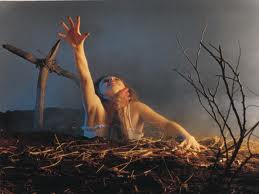
Robyn Howlett - Posts: 3332
- Joined: Wed Aug 23, 2006 9:01 pm
That is so not thinking outside the box. What about giving life to dead flowers and trees?
Heh. Zombie trees that eat people. Awesome.
Although I'm not sure I understand necromancy fully when applied to people, but do they come back as zombies or the people they once were? Like say if I died right now and someone cast a necromancy spell on me a minute later. Would it be like doing CPR where you just come back to life to your normal self? Or would I come back as a deranged zombie (of which I don't understand why that would happen)?
Depends. There's a difference between reanimation and resurrection. Necromancy generally applies the former. The latter would be more of a god thing.
-
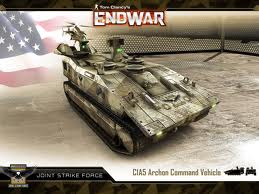
Vickytoria Vasquez - Posts: 3456
- Joined: Thu Aug 31, 2006 7:06 pm
Okay, it seems like a lot of people either have no idea what necromancy really is, its legality, and so on.
The only source we have about necromancy is contained here in, http://www.imperial-library.info/content/morrowind-preparation-corpse. Read it, learn it, be it.
Well...I know in MW, most daedra would disappear as dust (which makes sense). If it somehow doesn't vanish back into Oblivion, then I think a necromancer would just absolutely love to study and experiment on a daedroth's body. It's not like the daedroth would get too pissy, the physical body is nothing more than a shell.
The only source we have about necromancy is contained here in, http://www.imperial-library.info/content/morrowind-preparation-corpse. Read it, learn it, be it.
Well...I know in MW, most daedra would disappear as dust (which makes sense). If it somehow doesn't vanish back into Oblivion, then I think a necromancer would just absolutely love to study and experiment on a daedroth's body. It's not like the daedroth would get too pissy, the physical body is nothing more than a shell.
Ok, just so i'm understanding you properly, are you claiming to know all about necromancy based on 3 short books that deal with corpse preparation? seriously?
-

Kortknee Bell - Posts: 3345
- Joined: Tue Jan 30, 2007 5:05 pm
That's all we pretty much have, other than mad ravings or a bunch of vague hints.
-
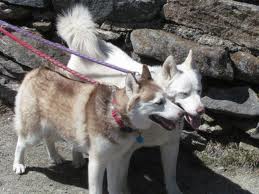
Mistress trades Melissa - Posts: 3464
- Joined: Mon Jun 19, 2006 9:28 pm
That is so not thinking outside the box. What about giving life to dead flowers and trees? Although I'm not sure I understand necromancy fully when applied to people, but do they come back as zombies or the people they once were? Like say if I died right now and someone cast a necromancy spell on me a minute later. Would it be like doing CPR where you just come back to life to your normal self? Or would I come back as a deranged zombie (of which I don't understand why that would happen)?
There are no souls to force back into a tree or flower(or spriggin for that matter, and daedra are in essence a corporeal soul if Im using the word correctly so you shouldnt be able to call them back to their dead form, in truth daedra should disappear in smoke or whatever) that is the difference.
-

Shae Munro - Posts: 3443
- Joined: Fri Feb 23, 2007 11:32 am
That's all we pretty much have, other than mad ravings or a bunch of vague hints.
We have the king of worms and what he did or that one necromancer chick in the fighter's stronghold quest that brought that one guy (I don't feel like looking it all up) back to life that still had his identity and maybe more that i'm forgetting.
-
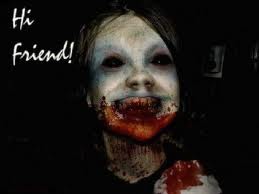
Emily abigail Villarreal - Posts: 3433
- Joined: Mon Aug 27, 2007 9:38 am
There are no souls to force back into a tree or flower(or spriggin for that matter, and daedra are in essence a corporeal soul if Im using the word correctly so you shouldnt be able to call them back to their dead form, in truth daedra should disappear in smoke or whatever) that is the difference.
Yeah, going to have to agree with you here. Plus, reviving dead flowers sounds more like the school of restoration than necromancy, as restoration seeks to restore, rather than reanimate (in which there is no restoration)
We have the king of worms and what he did or that one necromancer chick in the fighter's stronghold quest that brought that one guy (I don't feel like looking it all up) back to life that still had his identity and maybe more that i'm forgetting.
So....we have the king of worms reanimating people after they die and dominate their souls (doesn't require necomancy, normal mages can also learn soul trapping spells too). As for the one necromancer chick, I have no idea who you are talking about. Mind if you link that quest?
-

Taylor Tifany - Posts: 3555
- Joined: Sun Jun 25, 2006 7:22 am
I've got things to do at the moment, so for now I'll just walk in, post my segment on what I'd give a Necromancy spell school, and walk out.
Necromancy
Necromancy
Spoiler
*Necromancy: Revivification
-Revive: The signature skill of necromancy, pulling a spirit from the outer realms and forcibly placing it into a waiting corpse to act as its body. Though it resembles summoning, the skills involved are completely different, and talent at one does nothing to improve the other. Daedra cannot die, while spirits are the remains of a thing that is dead, and the two are almost polar opposites when it comes to magically manipulating their essence. As many ghosts have only partial consciousness and in general much weaker willpower than daedra, it is not necessary to further complicate the effort with binding Command magics; the caster’s will alone is enough. As well, since the caster isn’t temporarily forcing openings in powerful borders that separate Oblivion from the Mundus, spirits may be held for much longer periods. The caster’s Revivification skill dictates the difficulty level of animating a corpse. Novice necromancers are initially only able to animate fresh, intact bodies. As skill increases, in a method resembling how trapped souls are used to fuel the magic in items, the necromancer is able to manipulate the spirit to simulate missing ligaments and tissues, animating skeletons and incomplete bodies The pinnacle of reviving magic is the ability to animate monstrosities cobbled together from separate species. Servants created through reviving can last indefinitely without becoming “unsummoned,” with the failure rate of additional servants climbing the more that the necromancer has, including spirits. The normal method of reviving involves a ritual including the creation and/or preparation of the body. However, in tight situations, the necromancer may directly cast the spell on the bodies of the recently fallen to immediately reinforce their position. Though fast, this method creates a servant that is weaker, short-lived, and applied with a much lower skill level; it takes a more powerful necromancer just to instantly animate even fresh, intact corpses. As well, this damages the body against future use. Almost any previously-living thing that leaves a corpse can be revived or contribute parts to the process.
-Bind Spirit: Pulls a ghost into the world and chains it to the necromancer’s will as with Revive, but leaves it in its incorporeal state instead of sealing it within a corpse. Spirits are far less dangerous than daedra, but easier to maintain. Failure rates climb the more spirits that are summoned at once, and revived undead are included in this equation. Spirits can be given commands as through the necromancer’s Instruction skill. With targeted spells the caster can attempt to take control over free-roaming ghosts, allowing the same commands as with summoned spirits.
-Outer Inquiry: Sends a portion of the necromancer’s consciousness into the outer realms, directly communicating with more intelligent spirits instead of controlling them. Such conversations are more difficult to maintain than normal speech, are further limited by the magical rules of spell failure and magicka drain, and may be confusingly vague or bizarre. However, they can also be a source of rare or unusual information not normally gleaned from the living world. If specific information is needed, the necromancer may select a name to attempt to reach a certain person’s spirit. With a soul gem, the necromancer can attempt to trap the called spirit, and use it to revive the individual’s preserved and restored body, potentially returning them to true life, one of the most difficult and impressive powers of necromancy. Requires a ritual to be cast.
-Necrotic Virus: Raises a virus, one of the simplest types of life, into an undead form. Being dead, the virus cannot multiply and is no longer contagious. However, the body’s natural defenses can no longer destroy it, considerably increasing both its severity and the difficulty of removing it. Rebuke Spirit spells may slow its advancement or remove weaker viruses, but more potent infections may require special treatment, such as medicines containing shavings of enchanted silver. Viruses are maintained within a sample of dead flesh possessed by the necromancer, and the easiest way to spread them is by using the sample as the reagent for a Poison spell.
-Necrotic Organ: The necromancer attempts to raise parts of themselves as undead, allowing them to continue functioning. Though painful, dangerous, and difficult, it allows the caster to openly defy death. The spell has two functions; to negate an injury, and to protect an organ. The former requires that the caster be injured in some way, such as with a broken bone or damaged eye. Upon choosing the target and casting the spell the injury vanishes and that body part is considered undead, and is more difficult to injure a second time. A re-injured organ can be revived again, but this stacks, and is more difficult each time. Protecting the body requires that the spell be cast before combat, and will automatically revive an organ if it is struck. The more times a part is revived, the more it is considered undead. When undead organs are struck the character takes less damage depending on how advanced the state is, to the point that certain locations essentially cause no damage. However, the necromancer must maintain their own life, and the living portions of their body become ever more valuable. Vital areas take more damage the less of them there are, and fatigue/magicka regeneration slowly decrease. Undead organs will not naturally heal, and must be repaired with restoration magic, potions, or other supernatural means to be returned to life. The most powerful and dangerous use of the spell is to protect the heart beforehand; upon death the caster will collapse briefly and enemies will turn away, before the heart is revived and the caster stands with a small amount of health restored. However, this effect is temporary (duration depending on skill level), and if the heart isn't restored to life before then the necromancer will completely die. The Necrotic Organ effect has no use for entirely undead targets (including if the necromancer becomes a lich).
-Cannibalize Dead: Allows the caster to utilize dead flesh to heal wounds. Unlike the Necrotic Organ effect, it does not create undeath or alter living tissue, but instead uses dead tissue to replace destroyed flesh and then uses necromancy to blur the lines between living and dead, letting the replacements heal and become "normal" tissue. The spell must either target a corpse as the source or the caster must have flesh in their inventory. Though it restores health less effectively than restoration spells, and is not instant (the health regenerates more slowly), it allows healing within the necromancer's chosen field. Because it transmits solid matter, higher ranges increase spell difficulty dramatically, working best with On Touch. The spell loses efficiency the further the race of the target corpse is from the caster, with other humanoids being second best, followed by animals, then exotic monsters, and so on. Casts consume flesh according to magnitude, and smaller corpses can be quickly stripped. When health is otherwise full the spell can restore undead organs, but requires large amounts of "meat" as entire parts are being replaced, and healing is another degree slower. With material in inventory the necromancer can cast the spell on target; this is most effective for undead servants, who don't need the tissue to heal, and as such are recovered by it just as effectively as one casting restoration on themselves. Undead servants can be created capable of this effect, and will literally consume the dead to heal themselves.
-Forbidding: Prevents spirits that leave a body from pursuing their normal afterlife, effectively causing ghosts to spawn from the newly dead. Once the duration runs out there is a chance that lingering ghosts will disperse, depending on the skill of the caster (higher skill makes them more likely to remain in the physical world). Can be cast on a target or in an area, effecting any who die within its radius. Spirits created in this way don't have any specific allegiance, and may wander away, attack anything nearby, attempt to resume what they were doing in life, attack the one who killed them, and so on. Very powerful necromancers can combine a Forbidding effect with Bind Spirit, potentially creating a small army.
-Animate Item: A very simple form of undeath is induced into equipment made from organic components, such as bone, leather, or carapace. This allows them to “heal” from damage, essentially repairing material types that are often the most difficult to fully restore with normal means. Likewise, a negative version can be cast on enemies wearing items of the same material, degrading their equipment.
*Necromancy: Instruction
-Does not have normal spell effects. Rather, this skill governs the complexity of the orders a necromancer may give their servants. Both undead and spirits may be given orders, but only those created by the caster, as even those not hostile to the player are controlled by another necromancer. For the most part, the order system works the same as with leadership skills and the Request dialogue function, but falls under a different skill as it represents direct mental commands and not spoken orders. All servants can be called to defend the caster at any skill level, and when given this order supercedes all other instructions. Sets of orders may be copied if the caster wishes all of their servants to behave the same way, and may also be written into spellbooks as part of a ritual, to create undead with specific behaviors already built in. "Instruction" itself is cast as a low-cost spell, which brings up a command menu and existing servants, and may be used at any time.
-Hematic Script: The necromancer is capable of using blood to invoke necromantic power through writing. Essentially, by enscribing runes in blood they can enchant scrolls and books without using the Enchantment skill or a soul gem. Instruction skill determines the magnitude of power that the writing can hold. However, because dead blood is being used to power necromantic magic, non-Necromancy skill effects are more difficult to use in this way. Hematic Script is a highly personalized type of magic, and anyone other than the writer or their servants trying to use such an item has a higher difficulty penalty. As well, using such items at all requires comparable skill in Instruction, with higher rates of disastrous failure for those not meeting the requirements. If someone not a necromancer finds and attempts to use a necromantic spellbook written in Hematic Script, they are likely to kill themselves. More exotic or inherently magical types of blood can boost effects, or be used for highly specialized spells; for example, a scroll to animate someone's corpse written in their blood. If the necromancer chooses to grant this ability to an undead servant, they become capable of activating their creator's Hematic Script even if they can't read anything else. Depending on the power of the blood and the necromancer, Hematic Script will have a base level of magical power. If the inscribed effects stay below this level, it can be used repeatedly. Otherwise, the power will burn out on use. For example, a rune in blood might be enchanted with the Lockswitch spell, and used to open and close a hidden door at will.
*Necromancy: Design
-This skill, along with other effects, governs the necromancer’s ability to build and maintain corpses, including stitching, preservation, reinforcing, mummification, and so on. Improved skill increases the stats of servants in many ways, and raises the necromancer’s talent at reconnecting parts. Failure to properly maintain or attach pieces of corpses can drastically weaken the servant, prevent the spell from succeeding at all, or damage the corpse. While experienced necromancers favor composite undead to create more powerful servants, when preserving the original form of a corpse higher design skill can allow it to retain some of the skills it had in life. Bound spirits do not benefit from the Design skill.
-Poison: Rapidly speeds up the decomposition process, turning flesh into a toxic, putrefied mess. This can be directed toward enemies in two forms; gas or liquid. The ease of spreading it makes gas the preferred form of magical poison, and though not as instantly dangerous as other forms of poison it can lead to suffocation and disease over time, as well as crippling those caught within the cloud, sometimes simply from sheer revulsion. Liquid poison is much more dangerous, but harder to apply, often requiring that the target already be wounded, so that the substance has an entry point. Magical creation of poison requires an organic reagent, typically flesh of some kind, with its potency varying by skill and choice of reagent. Either form can be placed into a sealed container for later use, but may lose effect over time.
-Bone Shape: Utilizes the necromancer's skill in physical corpse maintenance and combines it with the same magical connections that replace tendons and muscle to create equipment. The spell can only be cast on self, upon which it opens a page listing bones in inventory and items that can be made from them. Quality depends on skill level and bone type (ogre bones are stronger than human, etc). Though items are of lesser quality and variety than normally crafted equipment, they can be made relatively quickly and easily at any time. At higher skill levels undead servants can be made to use the spell; a powerful servant can kill an enemy, eat its flesh to heal itself, then use the bones to improve its equipment.
-Reawaken: Attempts to modify dead flesh so that magicka once again naturally flows through it. Failure can damage and weaken the target material. This effect must be incorporated into overall revival of high-grade undead in order for them to be capable of using magic. A Reawakened corpse that has not been revived essentially becomes a necromantic power source in a certain radius around it, such as a focus or soul gem. However, the effect is very inefficient by comparison, and the amounts of dead flesh the average necromancer may carry with them cannot provide a substantial bonus, often requiring entire bodies. These corpses are frequently positioned around the necromancer's primary place of work, improving their abilities. When invoked through the Hematic Script ability, Reawaken can draw additional power from the blood writing, trading some of the overall potency of the script in exchange for the ability to better use non-necromantic spell effects.
-Revive: The signature skill of necromancy, pulling a spirit from the outer realms and forcibly placing it into a waiting corpse to act as its body. Though it resembles summoning, the skills involved are completely different, and talent at one does nothing to improve the other. Daedra cannot die, while spirits are the remains of a thing that is dead, and the two are almost polar opposites when it comes to magically manipulating their essence. As many ghosts have only partial consciousness and in general much weaker willpower than daedra, it is not necessary to further complicate the effort with binding Command magics; the caster’s will alone is enough. As well, since the caster isn’t temporarily forcing openings in powerful borders that separate Oblivion from the Mundus, spirits may be held for much longer periods. The caster’s Revivification skill dictates the difficulty level of animating a corpse. Novice necromancers are initially only able to animate fresh, intact bodies. As skill increases, in a method resembling how trapped souls are used to fuel the magic in items, the necromancer is able to manipulate the spirit to simulate missing ligaments and tissues, animating skeletons and incomplete bodies The pinnacle of reviving magic is the ability to animate monstrosities cobbled together from separate species. Servants created through reviving can last indefinitely without becoming “unsummoned,” with the failure rate of additional servants climbing the more that the necromancer has, including spirits. The normal method of reviving involves a ritual including the creation and/or preparation of the body. However, in tight situations, the necromancer may directly cast the spell on the bodies of the recently fallen to immediately reinforce their position. Though fast, this method creates a servant that is weaker, short-lived, and applied with a much lower skill level; it takes a more powerful necromancer just to instantly animate even fresh, intact corpses. As well, this damages the body against future use. Almost any previously-living thing that leaves a corpse can be revived or contribute parts to the process.
-Bind Spirit: Pulls a ghost into the world and chains it to the necromancer’s will as with Revive, but leaves it in its incorporeal state instead of sealing it within a corpse. Spirits are far less dangerous than daedra, but easier to maintain. Failure rates climb the more spirits that are summoned at once, and revived undead are included in this equation. Spirits can be given commands as through the necromancer’s Instruction skill. With targeted spells the caster can attempt to take control over free-roaming ghosts, allowing the same commands as with summoned spirits.
-Outer Inquiry: Sends a portion of the necromancer’s consciousness into the outer realms, directly communicating with more intelligent spirits instead of controlling them. Such conversations are more difficult to maintain than normal speech, are further limited by the magical rules of spell failure and magicka drain, and may be confusingly vague or bizarre. However, they can also be a source of rare or unusual information not normally gleaned from the living world. If specific information is needed, the necromancer may select a name to attempt to reach a certain person’s spirit. With a soul gem, the necromancer can attempt to trap the called spirit, and use it to revive the individual’s preserved and restored body, potentially returning them to true life, one of the most difficult and impressive powers of necromancy. Requires a ritual to be cast.
-Necrotic Virus: Raises a virus, one of the simplest types of life, into an undead form. Being dead, the virus cannot multiply and is no longer contagious. However, the body’s natural defenses can no longer destroy it, considerably increasing both its severity and the difficulty of removing it. Rebuke Spirit spells may slow its advancement or remove weaker viruses, but more potent infections may require special treatment, such as medicines containing shavings of enchanted silver. Viruses are maintained within a sample of dead flesh possessed by the necromancer, and the easiest way to spread them is by using the sample as the reagent for a Poison spell.
-Necrotic Organ: The necromancer attempts to raise parts of themselves as undead, allowing them to continue functioning. Though painful, dangerous, and difficult, it allows the caster to openly defy death. The spell has two functions; to negate an injury, and to protect an organ. The former requires that the caster be injured in some way, such as with a broken bone or damaged eye. Upon choosing the target and casting the spell the injury vanishes and that body part is considered undead, and is more difficult to injure a second time. A re-injured organ can be revived again, but this stacks, and is more difficult each time. Protecting the body requires that the spell be cast before combat, and will automatically revive an organ if it is struck. The more times a part is revived, the more it is considered undead. When undead organs are struck the character takes less damage depending on how advanced the state is, to the point that certain locations essentially cause no damage. However, the necromancer must maintain their own life, and the living portions of their body become ever more valuable. Vital areas take more damage the less of them there are, and fatigue/magicka regeneration slowly decrease. Undead organs will not naturally heal, and must be repaired with restoration magic, potions, or other supernatural means to be returned to life. The most powerful and dangerous use of the spell is to protect the heart beforehand; upon death the caster will collapse briefly and enemies will turn away, before the heart is revived and the caster stands with a small amount of health restored. However, this effect is temporary (duration depending on skill level), and if the heart isn't restored to life before then the necromancer will completely die. The Necrotic Organ effect has no use for entirely undead targets (including if the necromancer becomes a lich).
-Cannibalize Dead: Allows the caster to utilize dead flesh to heal wounds. Unlike the Necrotic Organ effect, it does not create undeath or alter living tissue, but instead uses dead tissue to replace destroyed flesh and then uses necromancy to blur the lines between living and dead, letting the replacements heal and become "normal" tissue. The spell must either target a corpse as the source or the caster must have flesh in their inventory. Though it restores health less effectively than restoration spells, and is not instant (the health regenerates more slowly), it allows healing within the necromancer's chosen field. Because it transmits solid matter, higher ranges increase spell difficulty dramatically, working best with On Touch. The spell loses efficiency the further the race of the target corpse is from the caster, with other humanoids being second best, followed by animals, then exotic monsters, and so on. Casts consume flesh according to magnitude, and smaller corpses can be quickly stripped. When health is otherwise full the spell can restore undead organs, but requires large amounts of "meat" as entire parts are being replaced, and healing is another degree slower. With material in inventory the necromancer can cast the spell on target; this is most effective for undead servants, who don't need the tissue to heal, and as such are recovered by it just as effectively as one casting restoration on themselves. Undead servants can be created capable of this effect, and will literally consume the dead to heal themselves.
-Forbidding: Prevents spirits that leave a body from pursuing their normal afterlife, effectively causing ghosts to spawn from the newly dead. Once the duration runs out there is a chance that lingering ghosts will disperse, depending on the skill of the caster (higher skill makes them more likely to remain in the physical world). Can be cast on a target or in an area, effecting any who die within its radius. Spirits created in this way don't have any specific allegiance, and may wander away, attack anything nearby, attempt to resume what they were doing in life, attack the one who killed them, and so on. Very powerful necromancers can combine a Forbidding effect with Bind Spirit, potentially creating a small army.
-Animate Item: A very simple form of undeath is induced into equipment made from organic components, such as bone, leather, or carapace. This allows them to “heal” from damage, essentially repairing material types that are often the most difficult to fully restore with normal means. Likewise, a negative version can be cast on enemies wearing items of the same material, degrading their equipment.
*Necromancy: Instruction
-Does not have normal spell effects. Rather, this skill governs the complexity of the orders a necromancer may give their servants. Both undead and spirits may be given orders, but only those created by the caster, as even those not hostile to the player are controlled by another necromancer. For the most part, the order system works the same as with leadership skills and the Request dialogue function, but falls under a different skill as it represents direct mental commands and not spoken orders. All servants can be called to defend the caster at any skill level, and when given this order supercedes all other instructions. Sets of orders may be copied if the caster wishes all of their servants to behave the same way, and may also be written into spellbooks as part of a ritual, to create undead with specific behaviors already built in. "Instruction" itself is cast as a low-cost spell, which brings up a command menu and existing servants, and may be used at any time.
-Hematic Script: The necromancer is capable of using blood to invoke necromantic power through writing. Essentially, by enscribing runes in blood they can enchant scrolls and books without using the Enchantment skill or a soul gem. Instruction skill determines the magnitude of power that the writing can hold. However, because dead blood is being used to power necromantic magic, non-Necromancy skill effects are more difficult to use in this way. Hematic Script is a highly personalized type of magic, and anyone other than the writer or their servants trying to use such an item has a higher difficulty penalty. As well, using such items at all requires comparable skill in Instruction, with higher rates of disastrous failure for those not meeting the requirements. If someone not a necromancer finds and attempts to use a necromantic spellbook written in Hematic Script, they are likely to kill themselves. More exotic or inherently magical types of blood can boost effects, or be used for highly specialized spells; for example, a scroll to animate someone's corpse written in their blood. If the necromancer chooses to grant this ability to an undead servant, they become capable of activating their creator's Hematic Script even if they can't read anything else. Depending on the power of the blood and the necromancer, Hematic Script will have a base level of magical power. If the inscribed effects stay below this level, it can be used repeatedly. Otherwise, the power will burn out on use. For example, a rune in blood might be enchanted with the Lockswitch spell, and used to open and close a hidden door at will.
*Necromancy: Design
-This skill, along with other effects, governs the necromancer’s ability to build and maintain corpses, including stitching, preservation, reinforcing, mummification, and so on. Improved skill increases the stats of servants in many ways, and raises the necromancer’s talent at reconnecting parts. Failure to properly maintain or attach pieces of corpses can drastically weaken the servant, prevent the spell from succeeding at all, or damage the corpse. While experienced necromancers favor composite undead to create more powerful servants, when preserving the original form of a corpse higher design skill can allow it to retain some of the skills it had in life. Bound spirits do not benefit from the Design skill.
-Poison: Rapidly speeds up the decomposition process, turning flesh into a toxic, putrefied mess. This can be directed toward enemies in two forms; gas or liquid. The ease of spreading it makes gas the preferred form of magical poison, and though not as instantly dangerous as other forms of poison it can lead to suffocation and disease over time, as well as crippling those caught within the cloud, sometimes simply from sheer revulsion. Liquid poison is much more dangerous, but harder to apply, often requiring that the target already be wounded, so that the substance has an entry point. Magical creation of poison requires an organic reagent, typically flesh of some kind, with its potency varying by skill and choice of reagent. Either form can be placed into a sealed container for later use, but may lose effect over time.
-Bone Shape: Utilizes the necromancer's skill in physical corpse maintenance and combines it with the same magical connections that replace tendons and muscle to create equipment. The spell can only be cast on self, upon which it opens a page listing bones in inventory and items that can be made from them. Quality depends on skill level and bone type (ogre bones are stronger than human, etc). Though items are of lesser quality and variety than normally crafted equipment, they can be made relatively quickly and easily at any time. At higher skill levels undead servants can be made to use the spell; a powerful servant can kill an enemy, eat its flesh to heal itself, then use the bones to improve its equipment.
-Reawaken: Attempts to modify dead flesh so that magicka once again naturally flows through it. Failure can damage and weaken the target material. This effect must be incorporated into overall revival of high-grade undead in order for them to be capable of using magic. A Reawakened corpse that has not been revived essentially becomes a necromantic power source in a certain radius around it, such as a focus or soul gem. However, the effect is very inefficient by comparison, and the amounts of dead flesh the average necromancer may carry with them cannot provide a substantial bonus, often requiring entire bodies. These corpses are frequently positioned around the necromancer's primary place of work, improving their abilities. When invoked through the Hematic Script ability, Reawaken can draw additional power from the blood writing, trading some of the overall potency of the script in exchange for the ability to better use non-necromantic spell effects.
YES? I think so
-
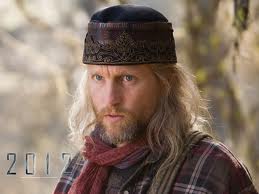
Rusty Billiot - Posts: 3431
- Joined: Sat Sep 22, 2007 10:22 pm
Necromancy has LOADS of potential as a skill. Not just reanimating corpouses, but also for example: making other being take damage instead of you (eather minion or enemy), sacraficing a body and you blood (you life) to create a clone follower of yourself. Making enemies rot (take continious damage), use blood of dead bodies to heal yourself, create substitude bodies from corpouses in case you die so you can take possesion of them and revive, create armor and weapons from your bones (for weapons thing something like wolverine) or bones from dead bodies, and lost of other stuff. While some of these might be similar to other skills, the way they are achived and the limitations of them would be much differant (for example a revived person lasts longer than a summon, but requires a dead body to revive/healing thought dead bodies instead of magicka, but with much bigger effect and so on)
So yea, I'm all in for necromancy. As for consequences for using it: necromancy is still considered inhuman by many, so using it when people see you migth make them compleatly disgusted in you, some even to the point of declaring it a crime againts nature and attacking you on sight (althought guards would be more likely to help YOU, unless that guard also thinks the same as that person)
So yea, I'm all in for necromancy. As for consequences for using it: necromancy is still considered inhuman by many, so using it when people see you migth make them compleatly disgusted in you, some even to the point of declaring it a crime againts nature and attacking you on sight (althought guards would be more likely to help YOU, unless that guard also thinks the same as that person)
-

Casey - Posts: 3376
- Joined: Mon Nov 12, 2007 8:38 am
Well...I know in MW, most daedra would disappear as dust (which makes sense). If it somehow doesn't vanish back into Oblivion, then I think a necromancer would just absolutely love to study and experiment on a daedroth's body. It's not like the daedroth would get too pissy, the physical body is nothing more than a shell.
I'd really love to work on an Ogrim myself. Make it's hide tougher, give it some powers, maybe even make it so I could mount the thing. Beats riding a dumb horse. :rock:
-

SexyPimpAss - Posts: 3416
- Joined: Wed Nov 15, 2006 9:24 am
Yeah, going to have to agree with you here. Plus, reviving dead flowers sounds more like the school of restoration than necromancy, as restoration seeks to restore, rather than reanimate (in which there is no restoration)
So....we have the king of worms reanimating people after they die and dominate their souls (doesn't require necomancy, normal mages can also learn soul trapping spells too). As for the one necromancer chick, I have no idea who you are talking about. Mind if you link that quest?
So....we have the king of worms reanimating people after they die and dominate their souls (doesn't require necomancy, normal mages can also learn soul trapping spells too). As for the one necromancer chick, I have no idea who you are talking about. Mind if you link that quest?
He could turn people into worm thralls plus he became a lich even though through the cheapness of oblivion he wasn't even in the form of a lich but still nvm that, http://www.uesp.net/wiki/Oblivion:Unwanted_Tenants
-

Gavin boyce - Posts: 3436
- Joined: Sat Jul 28, 2007 11:19 pm
104 posts
• Page 2 of 5 • 1, 2, 3, 4, 5
